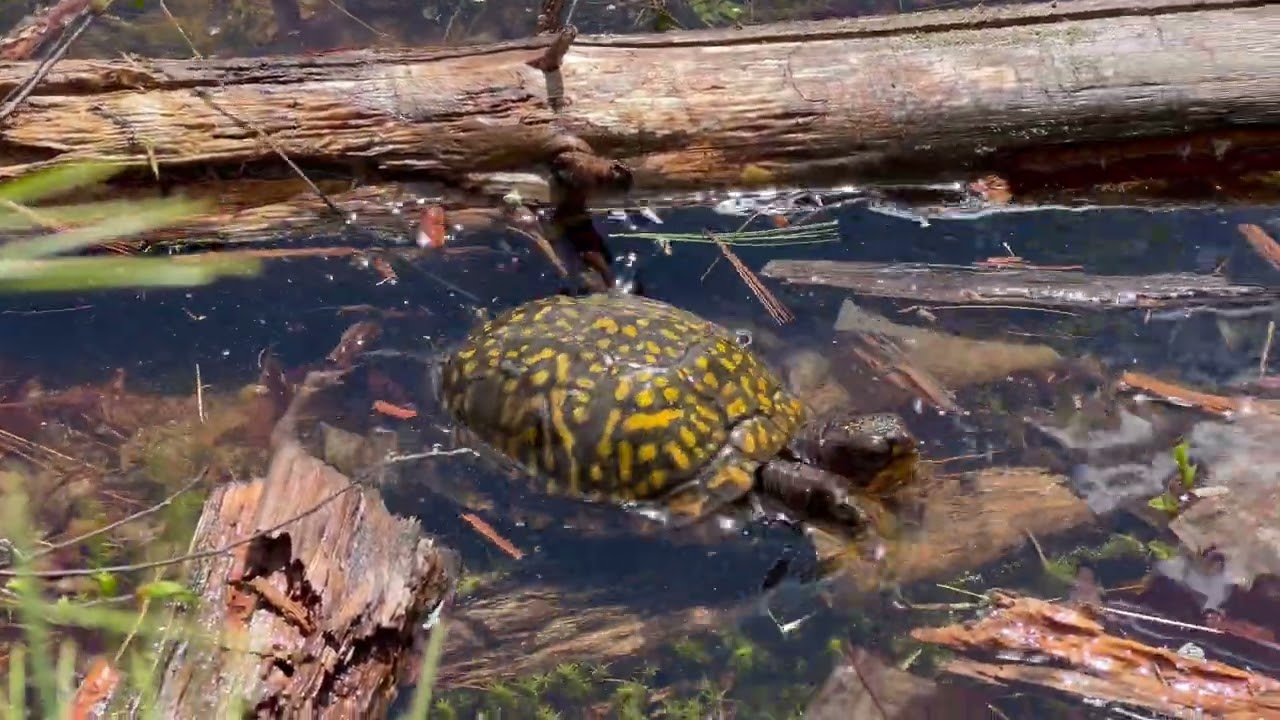- Understanding the Eastern Box Turtle: Anatomy and Habitat
- The Life Cycle and Behavior of the Eastern Box Turtle
- Conservation Status and Efforts for the Eastern Box Turtle
- The Role of the Eastern Box Turtle in Ecosystems and Biodiversity
- How to Support Eastern Box Turtle Conservation
Understanding the Eastern Box Turtle: Anatomy and Habitat
The Eastern box turtle, scientifically known as Terrapene carolina carolina, is a modestly sized terrestrial turtle native to the eastern United States. This species possesses a distinctive hinged plastron (the underside of the turtle), allowing it to retract its head, legs, and tail into its shell for protection. The carapace (upper shell) is highly domed and often adorned with vivid patterns ranging from bright yellow and orange to more subdued brown and black, aiding in camouflage among the forest floor’s leaf litter and logs.
Habitats favored by the Eastern box turtle encompass moist forest floors, meadows, and even near wetland edges, where the soil is soft enough for burrowing and offers abundant cover. They are ectothermic creatures, relying on external sources like sunlight and the environment to regulate their body temperature, making their habitat crucial for survival and daily activities such as foraging.
The Life Cycle and Behavior of the Eastern Box Turtle
The life span of an Eastern box turtle in the wild is impressive, with individuals reaching ages of 50 years or more, provided they survive the vulnerable early stages of their life cycle. Hatchlings are particularly susceptible to predation, given their smaller and softer shells. Once they reach adulthood, their hardened shells offer much better protection. Eastern box turtles are omnivores, with diets that vary depending on the availability of food sources, including fruits, vegetables, fungi, worms, and insects.
Behaviorally, these turtles are known for their homing instinct, often staying within a defined home range their entire lives. This fidelity to their home territory can lead to challenges as human development encroaches on their habitats. They are also recognized for their relatively solitary nature, coming together only for mating purposes.
Conservation Status and Efforts for the Eastern Box Turtle
The Eastern box turtle is currently classified as “Vulnerable” by the IUCN Red List, primarily due to habitat loss, road mortality, and collection for the pet trade. Their slow reproductive rate exacerbates these threats, as it takes individuals several years to reach sexual maturity, and females lay a relatively small clutch of eggs annually.
Conservation efforts for the Eastern box turtle include habitat preservation and restoration, policies to mitigate road mortality, and regulation of the pet trade. Many state and national parks where they are found have initiated monitoring programs to track populations and health status, which is crucial for informed conservation actions.
The Role of the Eastern Box Turtle in Ecosystems and Biodiversity
The eastern box turtle plays a significant role in its ecosystem. As omnivores, they help control insect populations and disperse seeds through their feces, contributing to the health of their habitats. Furthermore, their long life span makes them valuable indicators of environmental health and the effects of pollution on natural areas.
Biodiversity benefits greatly from the presence of Eastern box turtles, as their interactions with various plants and animals contribute to the intricate web of life that supports healthy ecosystems. Their survival and thrived are indicative of a robust and balanced ecosystem.
How to Support Eastern Box Turtle Conservation
Supporting Eastern box turtle conservation can take many forms, from advocating for the protection of natural habitats to reducing vehicle speeds in areas where they are known to cross roads. Individuals can also contribute by participating in citizen science projects monitoring turtle populations or supporting organizations dedicated to turtle conservation.
Another critical action is education on the negative impacts of removing these turtles from the wild for pets. Advocacy for stronger laws and regulations on the collection and trade of box turtles can also significantly impact their survival.
In summary, the Eastern box turtle is a fascinating species whose welfare is closely tied to the health of its environment and the actions of humans. Understanding their biology, behaviors, and challenges is the first step in ensuring their conservation and the preservation of biodiversity in the eastern United States. Through focused conservation efforts and public support, the future of the Eastern box turtle can be more secure, serving as a beacon of successful environmental stewardship and the intrinsic value of all wildlife.
*****
Source Description
Our conservation researchers spend hours in the field tracking local turtles. It can be tiring, dirty, soggy work. But here is their reward! Box turtle technician JJ Cruz caught up with our old friend Speckles, who still seems to be trucking right along.
A common species in the south, the Eastern box turtle (Terrapena carolina carolina) is Massachuetts’ only terrestrial turtle. Here near the northern edge of their range, they are much less common, and populations have declined significantly in recent decades through habitat loss and fragmentation.
We study and monitor eastern box turtle movements, home ranges, growth and survival, and when possible, protect their nests. We’re currently monitoring headstarted turtles recently released back into their natural habitat. Learn more about our work to protect this species: https://www.zoonewengland.org/protect/here-in-new-england/eastern-box-turtle-conservation/
Follow us on social for more conservation stories and inspiration:
https://www.facebook.com/stonezoo
https://www.facebook.com/franklinparkzoo/
https://www.instagram.com/zoonewengland/
Tweets by zoonewengland
@stone_zoo
@franklinparkzoo
https://www.threads.net/@zoonewengland


